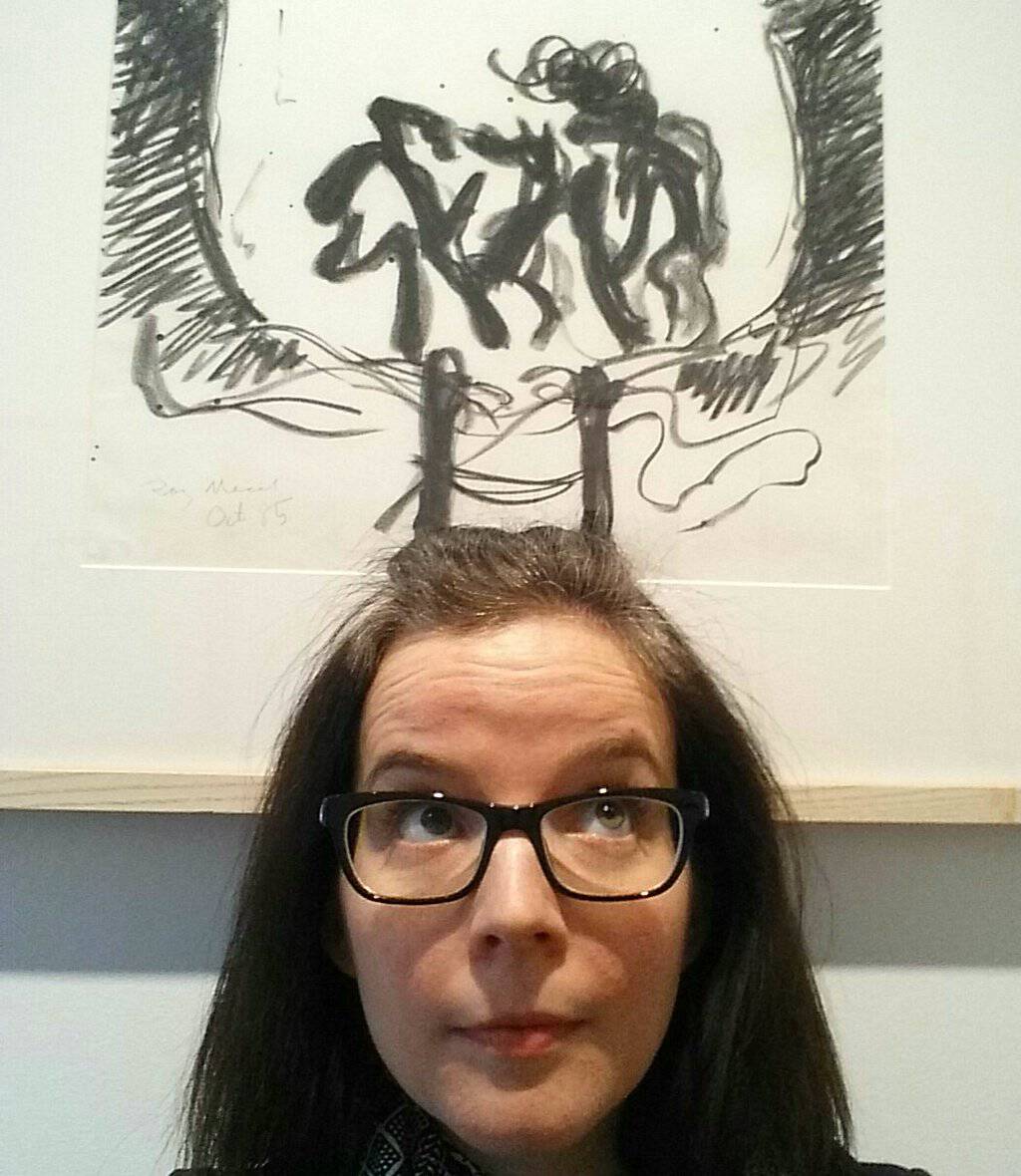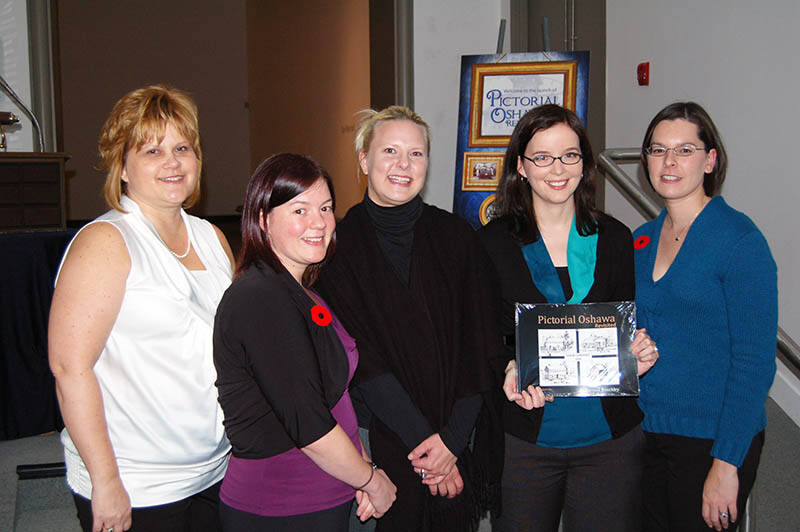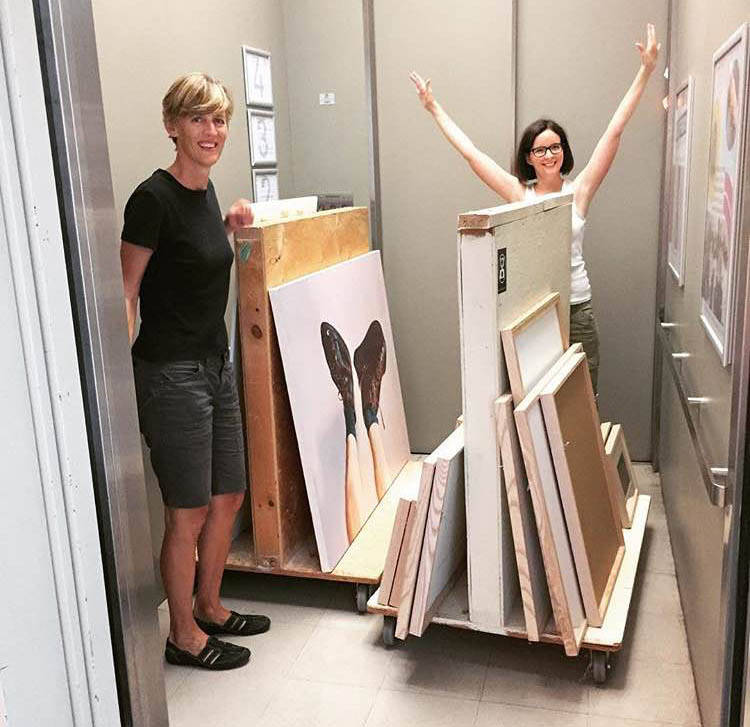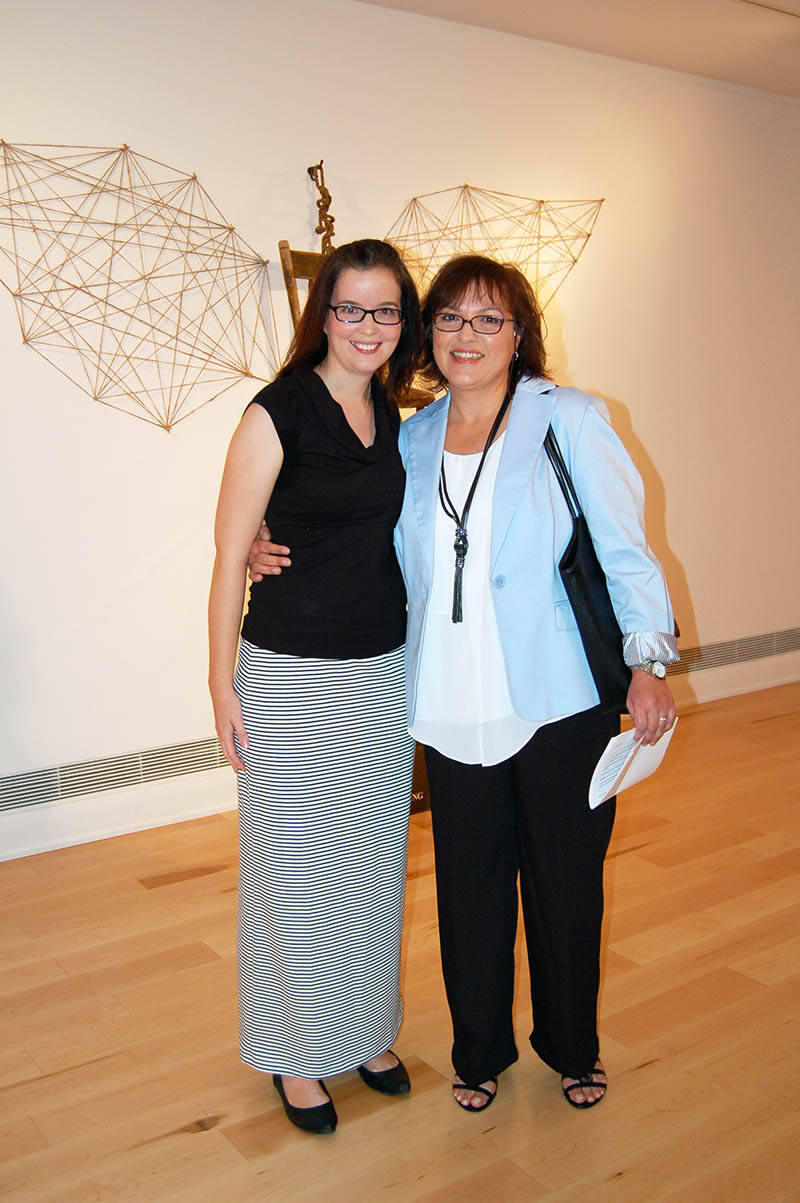At the RMG, we often get asked about what we do each day, how we got into the crazy museum world and also what skills would be needed to do our jobs. With graduation looming for many college and university students, we will be profiling members of our team to shed some light on what it is we do behind the scenes!
The RMG: What’s a typical day like for you?
Sonya Jones: What’s nice about having 2 titles and varied responsibilities is that no day is the same as the other! It’s refreshing to be able to wear many different hats doing what you love. Right now, I’m busy doing lots of studio visits, writing and prepping for the upcoming Jay Dart exhibition, working with a co-op student, volunteers and an intern, and trying to get everything for the next year in order (since I’m going on maternity leave in July). Some of my typical responsibilities are: curating contemporary art and historical photography exhibitions, collections management for all of our collections (permanent collection, Thomas Bouckley Collection, Library/Archives), managing and administrating our three collection databases, managing copyright and reproduction, facilitating art loans, and creating and implementing public programming activities.
RMG: How did you get into this field?
SJ: I originally went to Carleton University to study Journalism; however, all of my electives were art history courses. At one point near the end of my first semester of first year, I realized that I was putting all of my time and energy into my art history courses rather than on my major! Having grown up in a family who collected art, with my grandma and mom volunteering at the Burnaby Art Gallery, I was always exposed to art and galleries in general. I decided to switch my major in second year to Art History, and soon got a part time job at the Carleton University Art Gallery. This job opened many doors for me—whether inspiring me to pursue a career in an art gallery or giving me wonderful networking opportunities. It was a dream student job!
I did a practicum at the National Gallery of Canada in my third year, and after I graduated I got a job at the Canadian Heritage Information Network as a project assistant for an online new media art website. I later completed the Fleming College Museum Management and Curatorship program where I learnt many hands on collections management skills. During this program, I completed my full time summer internship at the RMG. It was hands down the best part of the program! Following my internship I worked for 3 years for a historical Canadian art dealer in Toronto until a job at the RMG was posted. I was absolutely thrilled when I was hired!
RMG: What skills or training do you need for your job?
SJ: Having a lot of experience in the field helped me get to where I am. Education is important too, but experience is key. I was also lucky enough to meet the right people and network a lot. Having an art history degree is useful for curating, and having museum studies for collections management is also helpful.
RMG: What’s your favourite part of your job?
SJ: Curating and working with artists! Also, I love connecting the community with its history and finding ways to interpret art or history in engaging and accessible ways.
RMG: What are 5 things you couldn’t live without in your job?
SJ: There’s so many but here’s my top five:
- RMG Staff – what a team we have here! It’s such a pleasure working with the amazingly creative and talented staff.
- Computer – I use it all the time, whether doing online research, managing the databases, emailing, writing essays etc.
- Outlook planner – Keeps me organized and tells me when I need to be somewhere!
- Scanner – I’m constantly scanning/digitizing historical images, documents etc.
- Permanent Collection – It’s a treat having access to the vault and getting to work with the amazing RMG collection.
RMG: What do you get up to outside of the RMG?
SJ: I’m a mom of a 2 year old so my days are busy! We spend a lot of time outside at my parents beautiful property, visiting with friends, and are currently getting ready to move! It’s a busy time for the growing Jones’ family!











